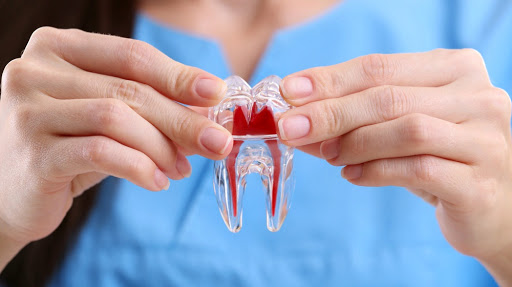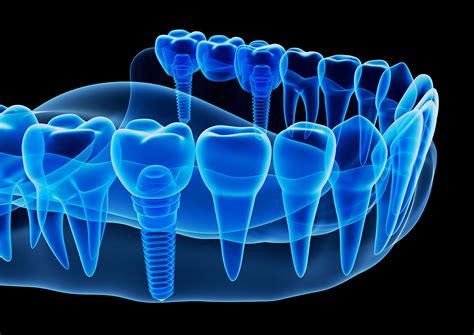
Let’s delve into the intricacies of dental care to empower you with more knowledge and understanding. Today, we shine a spotlight on porcelain crowns, a versatile dental solution that can restore both the function and aesthetics of your smile. Whether due to decay, injury, or cosmetic concerns, there are various reasons why someone might require a porcelain crown. Join us, your Porcelain Crown San Antonio experts, as we explore the unique benefits and scenarios where this dental marvel shines, providing lasting solutions for a healthy, restored, radiant smile.
Porcelain Crowns Can Restore Your Dental Issues
Porcelain crowns are long-term, durable options for a wide range of dental problems, usually lasting between 5-15 years and can improve the strength and appearance of teeth. Your porcelain crown San Antonio experts can restore teeth that contain cracks, have a broken-down root, or has had a root canal performed (as your root canal will need a dental crown to complete the procedure) to reinforce the tooth and strengthen the surrounding area of the mouth. Along with strengthening and restoring, porcelain dental crowns have multiple advantages, such as:
- Change the appearance of a tooth by altering its shape and color: Crowns can improve the look of your smile – helping the appearance of any misshapen, broken teeth, or dental implants and can help you get the smile you’ve been dreaming of.
- Protecting a tooth from being damaged further: Broken or misshapen teeth can impact your bite and the overall health of your mouth. Crowns eliminate further damage by fixing the problem before more damage can occur.
- Durable and stain resistant: Porcelain crowns are known to last for many years and are extremely stain resistant, helping your smile stay protected and spotless for a long time.
- Uses safe porcelain material that is FDA approved and non-harmful for patients: Porcelain crowns are known to be the most comfortable options for a patient’s mouth and are free of any harmful or toxic materials.
Along with all of these advantages, porcelain crown San Antonio can help restore the form, function, and aesthetics of your smile.
Are Dental Crowns Part of a Full-Mouth Restoration?
Creating your perfect smile might require a little more than the right toothbrush. If your teeth have become worn, broken, and decayed, you might consider a full mouth restoration. If you have a few missing and broken teeth, you are also a good candidate for full mouth restoration.
What is a Full Mouth Restoration?
A full mouth restoration is just what it sounds like rebuilding and replacing teeth to restore your mouth to full health and beauty. Sometimes, it is also called a full mouth reconstruction or a “smile makeover.” Regardless of its name, the benefits of having full-mouth reconstruction go beyond aesthetic, as it is also often done to improve overall health and functionality of the mouth.
Related Article: Dental Crowns Restore and Strengthen Your Tooth
What Other Procedures Can Improve Your Smile?
With a damaged tooth, some patients opt to simply remove or extract it. Other options can improve your smile during a full mouth restoration other than crowns and extractions. These options include bridges, veneers, dental implants, onlays, and dentures. Any of these options might be more appropriate, depending on the condition of your mouth and preference.
Your requirements will be unique. There are other options available in terms of full-mouth restoration tools, but in some cases, a crown might be your best option because dental crowns can restore teeth. Consultations and examinations are necessary before a full mouth restoration. Discussing treatment options with your porcelain crown San Antonio experts, including the potential for dental crowns, is an important part of the planning process. Let’s dive into this topic and discuss how dental crowns can restore teeth.
What Is a Porcelain Crown?
A porcelain crown is a custom-made cap that covers the entire tooth to restore its shape and size. These crowns provide added stability and strength to teeth that have been damaged or are decaying. These caps are made of porcelain. That porcelain is sculpted to resemble your tooth in its original shape, color, and function. It covers the affected part of your tooth while also replicating the natural shade of your teeth.
A porcelain crown protects a weak tooth from decay or breakage, restores a broken tooth, and supports a tooth with a large filling when only a small amount of the tooth is left. It can also hold a dental bridge in place or be used to make a cosmetic modification.
Porcelain crowns contain ceramic material, which is almost as durable as natural tooth enamel, more so when restoring a tooth. Porcelain crowns are strong and almost undetectable, lasting up to 15 years.
Do You Need a Dental Crown?
Whether or not you need a dental crown depends on the function and state of your teeth. If you have quite a few broken teeth, require a root canal procedure, or need a large filling, a dental crown will likely be an option to help restore those teeth. Your next step is to schedule your smile consultation!
5 Steps: Getting a Dental Crown Procedure
Porcelain crowns can restore teeth and are a common dental procedure done to repair damaged or broken teeth. From the outside looking in, the process of getting a dental crown procedure might seem complicated, but we’ve broken it down into five comprehensible stages.
- Consult: At this stage, the dentist will examine your teeth to determine if a dental crown is needed. Dental crowns are often used on broken or misshapen teeth. They might also be used in the case of a large filling or a root canal.
- X-ray: A dental X-ray helps your dentist fully evaluate your oral health. With this technology, issues like an abscess, infection, decay, and bone loss are visible. Some of these conditions might lead you to require a dental crown.
- Treatment Plan: If you require a dental crown procedure, it will be included in your treatment plan, along with any other treatments you need to restore your dental health. The treatment plan is almost a follow-up from the consult, but now, you move forward with more information regarding the current state of your dental health. At this point, it is time to prepare a plan of action. If you and your dentist determine that a dental crown is the best option to reconstruct your teeth moving forward, the dentist will prepare a final and a temporary crown.
- Prep the Crown: A final crown needs to be custom made, as they are created to suit your mouth. The shape is determined by using an impression or mold. The first step is filing down your tooth. The impression is made of the filed-down tooth, as well as the teeth beside it, to ensure that the final crown fits in the space perfectly. It takes time to construct your final crown, so in the meantime, a temporary one is used. A temporary crown is made using an impression of your tooth before it was filed down. The temporary crown is manufactured using acrylic-based material and will be created for you in our office. The temporary crown protects the tooth while the final crown is prepared.
- Seat the Crown: When your final crown is ready, you will return to the dentist to have it seated. The temporary crown will be taken out, and your final crown will be placed upon the tooth. Once your dentist ensures that the crown is the perfect fit, it will be cemented into place.
Getting a dental crown procedure is a much less intimidating process than it seems, especially once you understand the steps involved.
The Benefits of Choosing to Get a Porcelain Crown
As mentioned, a porcelain crown is durable and a more aesthetically-pleasing option to address broken or rotten teeth. Also, installing a porcelain crown may reduce sensitivity so you can eat, drink, or clean your teeth a bit easier. In comparison with other materials, porcelain crowns require a low level of maintenance. Consistent brushing and flossing are all that’s needed to keep your crown looking new, which is what you should provide to all of your teeth. You can enjoy your favorite food or drinks without worrying about staining your crown as porcelain is stain-resistant.
Your dentist can mold a porcelain crown to any size and shape, so you don’t even feel like you’re wearing a crown. Furthermore, any complications, such as tooth discomfort and sensitivity to temperature, are minimal.
Related Article: Restore Your Smile: Do You Need a Dental Crown?
Caring for Your Dental Crown
Basically, porcelain crowns can restore teeth (restorative dentistry) and their function while providing a natural look . They help you regain the original look and size of any tooth or can take the place of a missing tooth to make your smile whole again. Crowns must be cared for just like regular teeth, so you can continue to brush and floss the crown just as any other tooth. Although dental crowns are both strong and effective, they typically only last about ten years. Remember that you should continue to check in with your dentist to ensure that your crown is still functioning properly.
To keep your crowns healthy and long-lasting, make sure to:
- See your dentist every 6 months for a dental exam & cleaning
- Brush your teeth twice each day
- Floss daily
- Avoid hard or sticky foods that could cause damage
- Use fluoride treatments, if recommended
We Can Restore Your Teeth with a Porcelain Crown
If you thought porcelain crowns were just just used to complete a root canal treatment, now you know that porcelain crowns can restore teeth for many other reasons. Dental crowns are used to complete many treatments in both restorative and cosmetic dentistry. Remember, if you don’t like your smile because it’s cracked, misaligned, stained, or in poor health – your porcelain crown San Antonio experts can help!
Call and schedule a Smile Consultation with Gary Skrobanek, DDS our Smile Makeover Expert at GPS Dental! We work hard to make sure our patients have healthy, confident smiles they love to share with others. We’d love to help you smile every day too.!
Dr. Gary P. Skrobanek’s experienced and friendly team at GPS Dental offers affordable dental care for all ages in San Antonio, TX area. Our Brooks City Base dentist office is conveniently located and offers early morning appointment times Monday through Friday to meet your needs. At GPS Dental, we promote dental health awareness to our patients and provide most dental services, from family and general dentistry to dental implants, sleep apnea, TMJ / TMD Treatment, cosmetic dentistry and much more. We accept most dental insurance plans and offer affordable financial solutions for any budget. Call us at 210-633-3477 to make an appointment.














